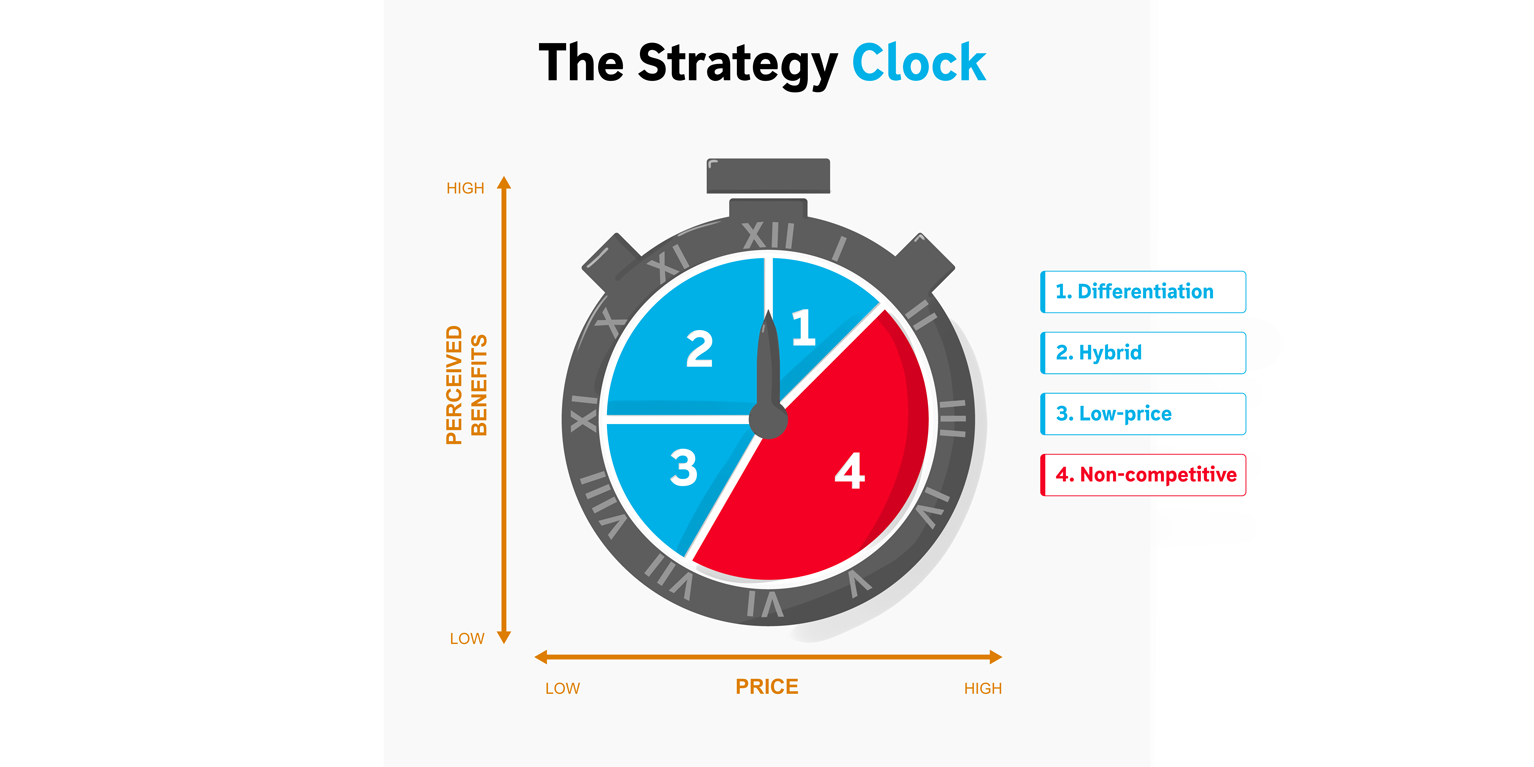Navigating the Market Maze: How the Strategy Clock Can Guide Your Business
In today’s hyper-competitive marketplace, standing out from the crowd is a constant struggle. With endless options available at a click, consumers are spoilt for choice, and businesses are left scrambling to find their edge. This is where the Strategy Clock, a timeless strategic management model, can provide valuable insights.
Developed nearly 30 years ago by Cliff Bowman and David Faulkner, the Strategy Clock has stood the test of time because it addresses a fundamental truth: customers are driven by value, not just price. This is why understanding the Strategy Clock’s four zones can be a game-changer for any business.
Zone 1: Differentiation Strategy
Imagine a luxury car brand offering top-notch quality and features at a price point that’s competitive but not the absolute cheapest. This is the essence of Zone 1 – Differentiation Strategy. You win by offering exceptional value, leaving customers feeling they’ve received more than what they paid for. This strategy is powerful for building brand loyalty and attracting a loyal customer base.
Zone 2: Hybrid Strategy
This zone is for businesses looking to make a bold move. Think of a new smartphone brand entering the market, offering cutting-edge features at a significantly lower price than established players. This is Zone 2 – Hybrid Strategy, where you combine high perceived benefits with attractive pricing, making you a compelling alternative. This strategy is ideal for entering new markets or challenging established competitors.
Zone 3: Low-Price Strategy
While tempting, Zone 3 – Low-Price Strategy is a delicate dance. It’s about offering a basic product at the lowest price in the market, relying on volume sales to make up for thin margins. However, this strategy can become unsustainable if your costs are not under control. Without a cost advantage, you’ll find yourself in a price war, constantly needing to cut corners or raise prices to stay afloat.
Zone 4: Non-Competitive Strategy – The No-Go Zone
This zone is simply off-limits. Offering low benefits at a high price is a recipe for disaster. Customers are savvy enough to recognize a lack of value, and they have a plethora of alternatives at their fingertips.
Beyond the Zones: The Dynamic of the Strategy Clock
The beauty of the Strategy Clock lies in its dynamism. You are not locked into a single zone. Just like the hands of a clock, you can adjust your pricing and value proposition to move between zones as your business evolves and market conditions change. This allows you to respond to competitor actions, adapt to customer preferences, and optimize your strategy for maximum impact.
While the Strategy Clock is a useful tool, it does have some limitations. The model assumes a simple two-dimensional view of strategy (price and value). If you are familiar with StrategyBlocks, you will know that strategy is multi-dimensional, Risks (both internal and external) need to be considered, as do outcomes not relating to price and market share.
The Strategy Clock – A Tool for Growth and Adaptability
The Strategy Clock is not a magic bullet, but it offers a valuable framework for analyzing your competitive landscape and making strategic decisions. By understanding the zones, identifying your current position, and charting your desired path, you can navigate the market maze with confidence. Remember, the key is to find the right balance between price and value, and to be prepared to adapt your strategy to stay ahead of the curve.




Leave A Comment